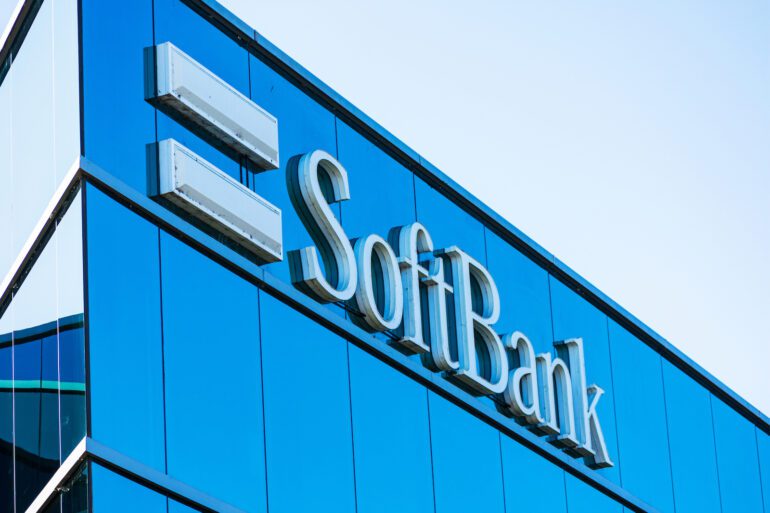TL;DR:
- SoftBank reports unexpected consecutive quarterly overall loss and ongoing losses in the existing investment business.
- Vision Funds display a quarterly gain of $0.8 billion, including shared assets like ARM holdings.
- However, when excluding shared assets, Vision Funds 1, 2, and Latin American fund show a combined quarterly investment loss of $91 million, a significant improvement from last year’s $20 billion loss.
- Cumulative losses across the three funds amount to $6.3 billion by June 30.
- SoftBank Group faces a net loss of $3.3 billion, defying analysts’ projections of a return to profitability.
- CFO Yoshimitsu Goto indicates a cautious return to investment activities, with a continued focus on the AI trend.
- Vision Fund 1 and 2, along with LatAm fund, hold commitments totaling $166.2 billion, with acquisition costs at $146.6 billion and asset fair value at $140.3 billion.
- Detailed breakdown reveals varied performance, with Vision Fund 1 and 2 experiencing losses and LatAm fund gaining from portfolio company sales.
- Share price declines in holdings like Alibaba and Deutsche Telekom contribute to an overall investment loss of nearly $4.9 billion for the quarter.
- Vision Fund 1 sees more success with investments split between private and public companies, while Vision Fund 2’s fair value lags behind at $32.2 billion.
- Despite challenges, Vision Fund 2 is set to lead future investments.
- Over 94% of portfolio companies across all funds have over 12 months of cash runway.
Main AI News:
SoftBank, a prominent player in the realm of technology investments, finds itself in an intricate web of losses despite its escalating interest in artificial intelligence (AI) ventures. The latest quarterly report reveals an unexpected sequential overall loss and a continued struggle within its existing investment sector.
A glimmer of hope shone through the haze as the Vision Funds demonstrated a momentary flicker of success, boasting a quarterly gain of $0.8 billion, a figure encompassing shared assets, including the prized ARM holdings. Scrutinizing these shared assets, a discerning eye unveils that SoftBank’s amalgamated Vision Fund 1 and 2, coupled with its Latin American counterpart, encountered a quarterly investment setback of 13 billion yen ($91 million), a stark contrast to the colossal loss of 2,919 billion yen ($20 billion) witnessed a year ago.
The chronicle of losses spans the panorama of SoftBank’s portfolio, with the trio of funds—comprising Vision Funds 1 and 2, and the Latin American fund—accumulating a substantial $6.3 billion in losses as of June 30. This stark reality is further compounded by SoftBank Group’s net loss of 477.6 billion yen ($3.3 billion), a disheartening outcome that defied analysts’ anticipations of a profitable quarter.
“We are cautiously embarking on renewed investment endeavors,” iterated CFO Yoshimitsu Goto during today’s presentation, a sentiment echoed as the company pivots to focus on the prevailing AI trend.
Within the firm’s expansive strategy, Vision Funds 1 and 2, alongside the LatAm fund, collectively amass a total commitment of $166.2 billion. These commitments are juxtaposed against acquisition costs of $146.6 billion, while the assets’ current fair value stands at $140.3 billion.
Detailed dissection reveals the contrasting fortunes of the Vision Fund duo: the first witnessed a quarterly loss of 38.749 billion yen, whereas the second encountered a more substantial loss of 46.860 billion yen. Conversely, the LatAm fund recorded a substantial gain of 47.496 billion yen, supported by a boost driven by the divestiture of SoftBank’s portfolio gem, Pismo, to Visa for a remarkable $1 billion in June.
Yet, the ebullience is short-lived, dampened by the downfall of share prices in holdings such as Alibaba, Deutsche Telekom, and T-Mobile US. This tumultuous backdrop culminated in an overbearing quarterly loss of 699 billion yen (approximating $4.9 billion), stemming from SoftBank’s overall investment ventures.
Although SoftBank has undeniably charted significant progress through its inaugural Vision Fund, its sequel, Vision Fund 2, struggles to match the stride. The former’s comprehensive investment history, encompassing nearly $90 billion, is divided into a symphony of $37.5 billion invested in private firms, $20.5 billion in public entities, and $44.2 billion in exit strategies. A far cry from its predecessor, Vision Fund 2’s fair value stands at a modest $32.2 billion, a testament to its nascent stage.
Embarking on a promising trajectory, Vision Fund 2 is poised to lead the charge in forthcoming investments, heralding a renewed chapter for SoftBank.
In a reassuring development, SoftBank divulges that a staggering 94% of its portfolio companies, spanning across all fund divisions, enjoy a financial runway stretching beyond 12 months—a testament to the company’s astute portfolio management.
While eyes are fixated on the unfolding presentation, a spotlight shines on SoftBank’s foray into AI investments, particularly its relationship with Arm. We stand poised to update this narrative with the insights emanating from the company’s discourse.
In a recent stride, SoftBank’s Japanese subsidiary, bearing the same moniker and overseeing domestic affairs, unveiled a new venture named SB Intuitions. This endeavor is poised to construct an expansive Large Language Model and generative AI services that cater specifically to Japan’s diverse businesses and consumers. July marked another milestone as SoftBank orchestrated a substantial investment into Symbotic—a pioneering AI-driven warehousing logistics and robotics enterprise—bolstered by a collaborative effort aimed at delivering services to third-party stakeholders.
Conclusion:
SoftBank’s persistent losses within its Vision Fund business, despite a modest gain in shared assets, underscore the complexity of navigating AI-driven investments. The market should anticipate a cautious yet strategic approach from SoftBank, as the company’s focus on AI continues. Vision Fund 2’s role in future investments signals an evolving landscape for the company’s portfolio, while the stability of most portfolio companies bodes well for its overall resilience in the market.

